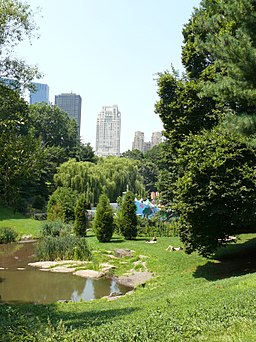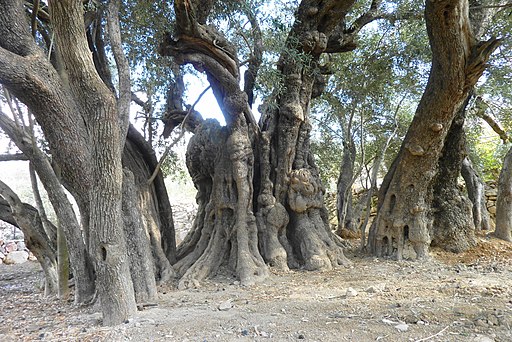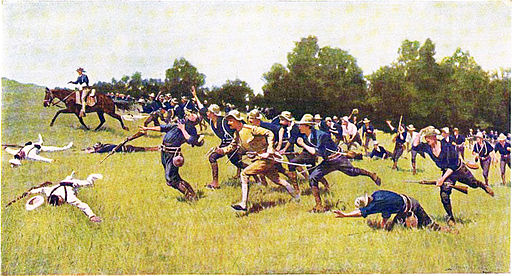The Hiding Place
One of the problems with a hedgerow monoculture occurs when one or more of the plants dies, creating a gap that must then be filled with the same kind of plant, sometimes at considerable expense if the new plant is not to be too conspicuous by its smaller size. The gardener can feel trapped, and the trap can get more enveloping and add even more expense if the reason for a plant’s death is a disease or pest, engaging the gardener in an endless battle. Sometimes it can be a blessing when a disease or pest spreads quickly from one plant in the monoculture to the next, ending the battle with its consequent frustrations and expenses and presenting the gardener with a blank slate after a tree removal company has carted away the battlefield fallen.

This colonnade of Leyland cypresses in England is presumably a windbreak for the greenhouses behind. Photo by Ben Gamble.
On a small lot in particular a gardener should not expect to get very many fruits and berries for their own consumption. Birds love eating the same things, and they are outside all day every day, watching for ripeness, and when it comes the birds get to the fruits and berries very soon. Netting is a nasty business that tangles up birds and other critters, killing them, and it has no place in a garden planted for wildlife. Either be content with gleaning a few fruits and berries here and there, or build a small greenhouse to grow a few protected plants. Gardeners with large plots of land have more options, both for the wildlife and for themselves. Plant native plants when possible, because they are better adapted to coexist with native wildlife. Once there are birds and frogs and other insect eaters living nearby, the gardener may actually find fewer pest and disease problems in the rest of the garden, and that alone makes it worth the trouble of devising a landscape scheme more varied and interesting than a soldier row of Leyland cypresses.
— Izzy


















